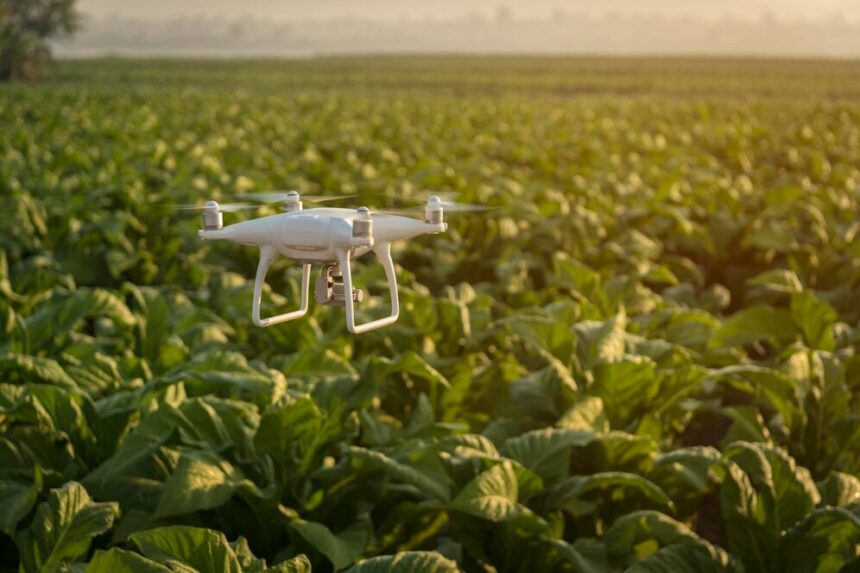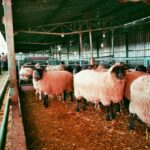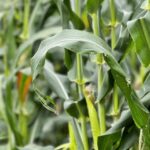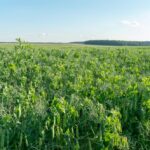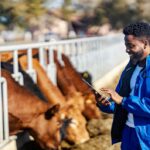In recent years, the integration of drone technology in agriculture has significantly transformed how farmers monitor and manage their crops. Drones, or unmanned aerial vehicles (UAVs), offer a powerful tool for gathering data and insights in ways that were previously time-consuming, costly, or even impossible. As technology continues to evolve, drones are becoming an indispensable part of modern farming, revolutionizing crop monitoring and improving overall agricultural productivity.
1. Real-Time Data Collection and Analysis
Drones provide farmers with the ability to collect real-time data across vast areas of land. Equipped with high-resolution cameras, multispectral sensors, and thermal imaging tools, drones can capture detailed images and data that would take traditional methods days or even weeks to compile. These images allow farmers to monitor crop health, soil moisture levels, and the presence of pests or diseases.
The ability to analyze this data in real time helps farmers make informed decisions quickly. For example, if a drone detects areas of a field that are stressed due to a lack of water or nutrient deficiencies, farmers can immediately take action to address the issue, potentially saving crops and resources.
2. Precision Agriculture and Resource Management
One of the most significant advantages of drones is their ability to aid in precision agriculture. Precision agriculture focuses on using technology to optimize crop yields and minimize waste. Drones help achieve this by providing accurate, high-quality data that allows farmers to precisely target their interventions.
For example, drones can be used to monitor irrigation systems, ensuring that water is distributed evenly across the field. Drones equipped with multispectral sensors can also detect areas where crops are underperforming, allowing farmers to apply fertilizers or pesticides only where they are needed. This targeted approach reduces the use of chemicals and water, leading to cost savings and more sustainable farming practices.
3. Early Detection of Crop Diseases and Pests
Early detection of pests and diseases is crucial to preventing the spread of infections that can devastate crops. Traditional methods of monitoring pest populations or identifying disease symptoms can be labor-intensive and often require extensive fieldwork. Drones, however, provide an efficient solution by quickly scanning large areas of farmland.
Using thermal and multispectral sensors, drones can detect changes in plant temperature, color, and structure that indicate the presence of diseases or pests. This early warning system allows farmers to take preventative measures, such as applying targeted treatments, before the problem spreads and causes widespread damage. Timely intervention can result in healthier crops and higher yields.
4. Improved Crop Yield Prediction
Accurate crop yield predictions are essential for farm planning, market forecasting, and resource allocation. Drones have the ability to gather data on crop growth patterns and conditions, helping farmers make more accurate predictions about their harvests. By analyzing the data captured by drones, farmers can assess the health of their crops and predict potential yield fluctuations due to environmental factors like drought, disease, or pest damage.
Additionally, drones can be used to monitor the growth of crops throughout the growing season, allowing farmers to adjust their strategies accordingly. Whether it’s adjusting irrigation schedules or optimizing fertilizer application, having access to real-time, accurate data helps ensure that the crops are given the best possible conditions for growth.
5. Reducing Labor Costs and Increasing Efficiency
Traditional crop monitoring methods often involve extensive labor, from physically walking the fields to manually recording data. This can be time-consuming and costly. Drones, on the other hand, can cover large areas of land in a fraction of the time and with minimal manpower. By automating the process of data collection, drones free up farmers to focus on other critical tasks, increasing overall farm efficiency.
The use of drones also reduces the need for costly ground-based equipment and minimizes the disruption to the soil that can occur with traditional monitoring techniques. Drones are lightweight and operate above the crops, making them less invasive and better for the overall health of the land.
6. Precision in Fertilizer and Pesticide Application
Over-application of fertilizers and pesticides is a significant environmental concern, as it can lead to soil degradation, water pollution, and harm to beneficial insects. Drones help mitigate this issue by enabling farmers to apply these substances precisely where needed.
By using drones with multispectral sensors, farmers can identify areas of their fields that require additional nutrients or pest control. This allows for targeted application, reducing waste and ensuring that chemicals are only used where they will be most effective. This not only saves costs but also reduces the environmental impact of farming practices.
7. Better Monitoring of Field Conditions
Drones are not limited to monitoring crops; they can also be used to track overall field conditions. With sensors capable of measuring soil moisture, temperature, and compaction, drones provide farmers with detailed insights into the health of their soil. Understanding soil conditions is crucial for making informed decisions about irrigation, fertilization, and crop rotation.
For example, by using drones to monitor soil moisture levels, farmers can optimize irrigation schedules, ensuring that crops receive the right amount of water without wasting resources. Drones can also help detect areas of the field that may require soil amendments, such as lime or compost, to improve its fertility.
8. Environmental Sustainability
Drones contribute to environmental sustainability by promoting more efficient resource use and reducing the need for harmful chemicals. By providing accurate data on crop health and field conditions, drones enable farmers to optimize their practices, reducing the overuse of water, fertilizers, and pesticides. Additionally, drones allow for more targeted and precise management of crops, which helps minimize soil erosion and preserve biodiversity.
As drone technology continues to evolve, it is likely that their role in promoting sustainable farming practices will only increase. From reducing carbon emissions to preserving natural ecosystems, drones are playing a key role in shaping the future of agriculture.
Drones are undoubtedly revolutionizing crop monitoring, offering farmers unprecedented access to real-time data and precision management tools. By enhancing the ability to detect pests, diseases, and crop stress early, drones enable farmers to take proactive steps to protect their crops. Moreover, drones contribute to more sustainable and cost-effective farming practices, helping farmers improve yields while minimizing their environmental footprint. As the technology continues to advance, the role of drones in agriculture will only grow, further transforming the way we approach food production in the 21st century.
Join 'Farmers Mag' WhatsApp Channel
Get the latest Farming news and tips delivered straight to your WhatsApp
CLICK HERE TO JOIN
